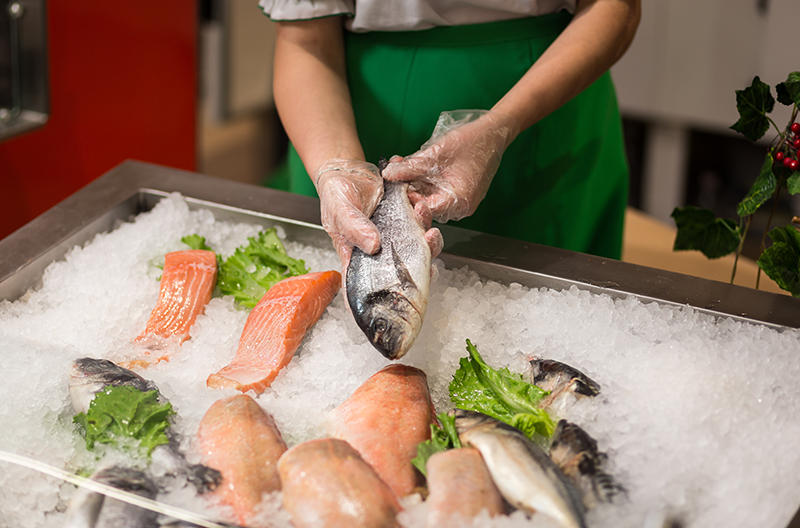Prices came down for fresh and shelf-stable seafood, according to the primary shopper survey presented by Circana, 210 Analytics and Elanco.
Inflation for frozen seafood was below average, at 1.6 percent in September versus last year at the same time.
In the 52-week look, total seafood prices are down 0.6 percent, however, at an average price per pound of $9.19, prices are higher than those of the three biggest animal proteins of chicken ($2.98), pork ($3.18) and beef ($6.37).
Retail prices for salmon still rose in September 2023 versus 2022, but the rate of inflation has decelerated to 3.5 percent. Shrimp prices at retail are also starting to mirror the trends at wholesale. Crab prices remained far below year-ago levels.
In the frozen food aisle, the average price per pound for shrimp decreased by 8.1 percent, whereas salmon prices were down 4.7 percent from last September. In the 52-week view, salmon prices still reflected substantial inflation, especially when comparing the average price per pound to three years ago, an increase of 41 percent.
Seafood across store
Despite favorable price conditions, fresh, frozen and shelf-stable seafood experienced year-over-year dollar and volume declines in September.
Ambient seafood
In September, ambient tuna in cans and pouches reached $152 million in sales, which reflected a decrease of 4.8 percent from September 2022. All areas, with the exception of sardines, declined.
Fresh seafood
In September, fresh seafood generated $438 million in sales and the year brought in $6.4 billion. Finfish was the bigger seller, but saw both dollars and pounds drop from last year’s levels. Unlike prior months, shellfish also backslid in pounds, albeit it less than finfish.
The third quarter has been tougher for dollars and pounds compared to the first and second quarters of the year, with both dipping below year-ago levels.
The third quarter also brought a change in course for shellfish volume that had been recovering, but once more approached double-digit declines.
Top species
Sales across the top eight fresh seafood species were inconsistent in September. The market leader, salmon, generated more than twice the sales of the No. 2, crab. Volume sales were down for all species, with the exception of catfish, that increased by 1.9 percent.
Frozen seafood sales
The total frozen food department reached $5.5 billion in sales in the four September weeks, down 1.1 percent versus last year. Whereas processed meat/poultry had dollar and unit gains, meat/poultry and seafood experienced declines.
By type, frozen shellfish (predominantly raw and cooked shrimp) was the largest seller in September, at $273 million. But compared to year-ago levels, this month was another tough month with dollars and pound sales down substantially. All other seafood includes items such as seafood cakes, salads, dips and sauces.
Top five frozen species
Shrimp is the frozen seafood powerhouse, with sales of $3.5 billion in the latest 52 weeks. However, shrimp sales dropped in dollars and volume in the short- and longer-term time periods.
Salmon, while the dominant species in fresh, is the second-largest seller in frozen – showing strong September sales in dollars and pounds.
Read more seafood news from The Shelby Report.

